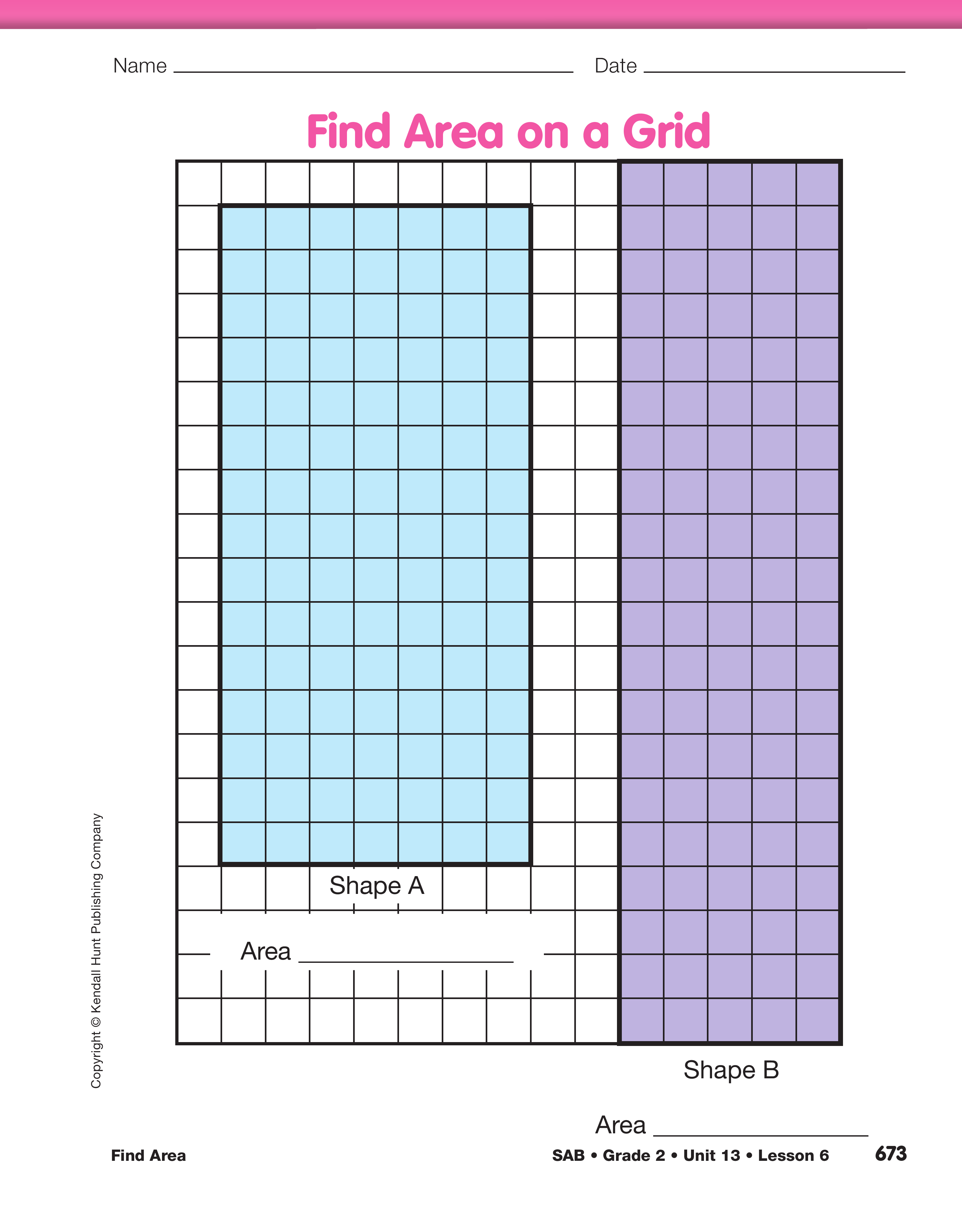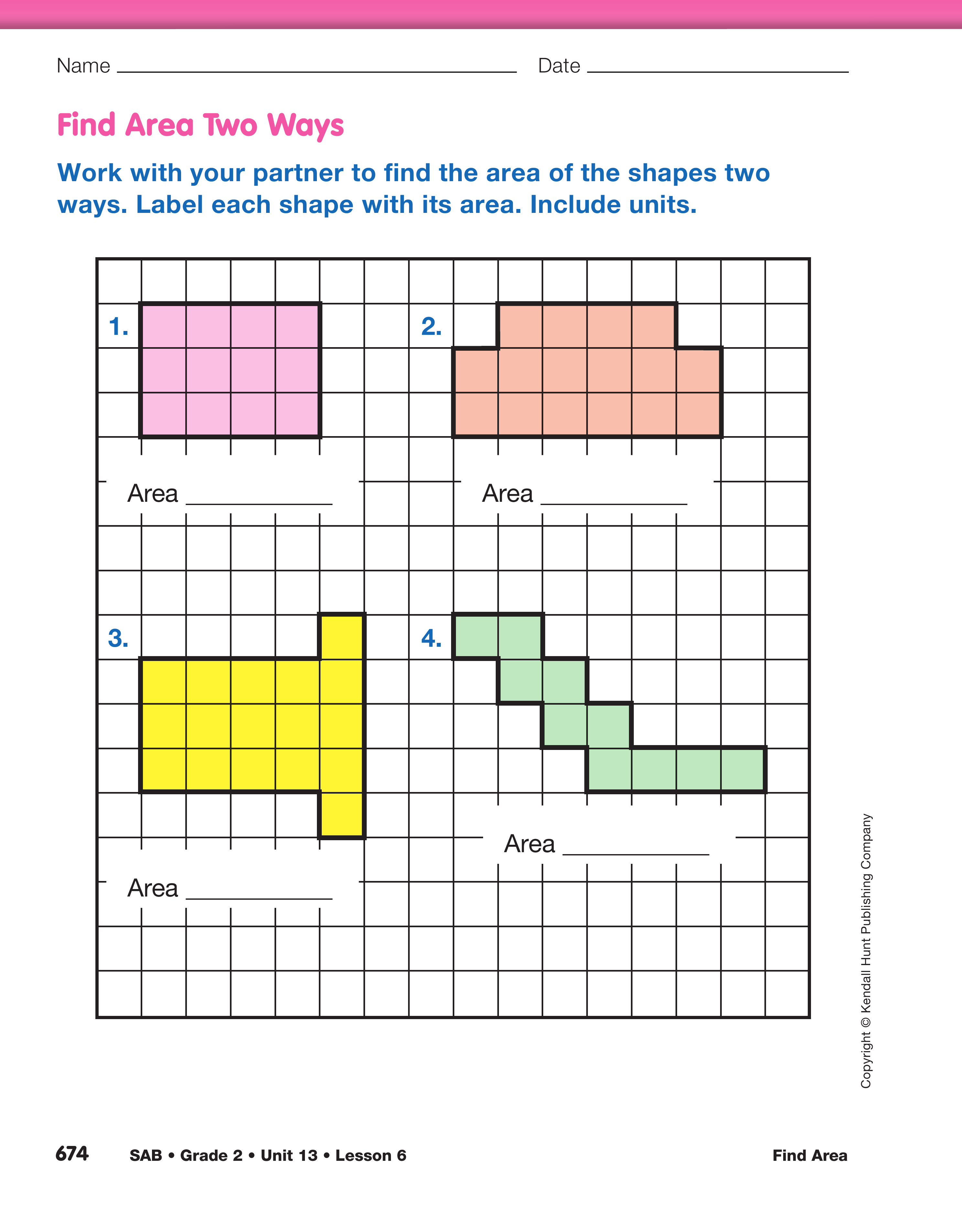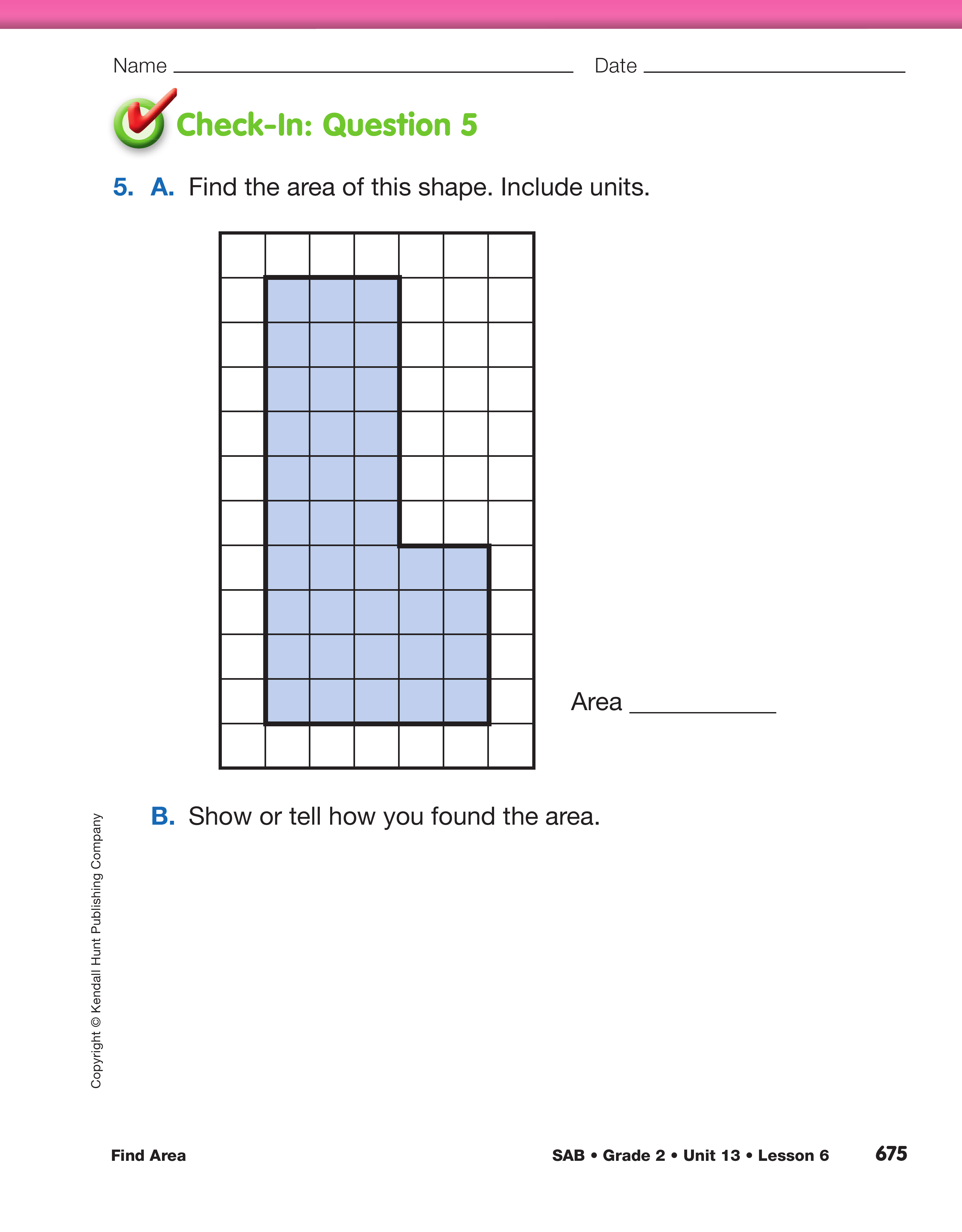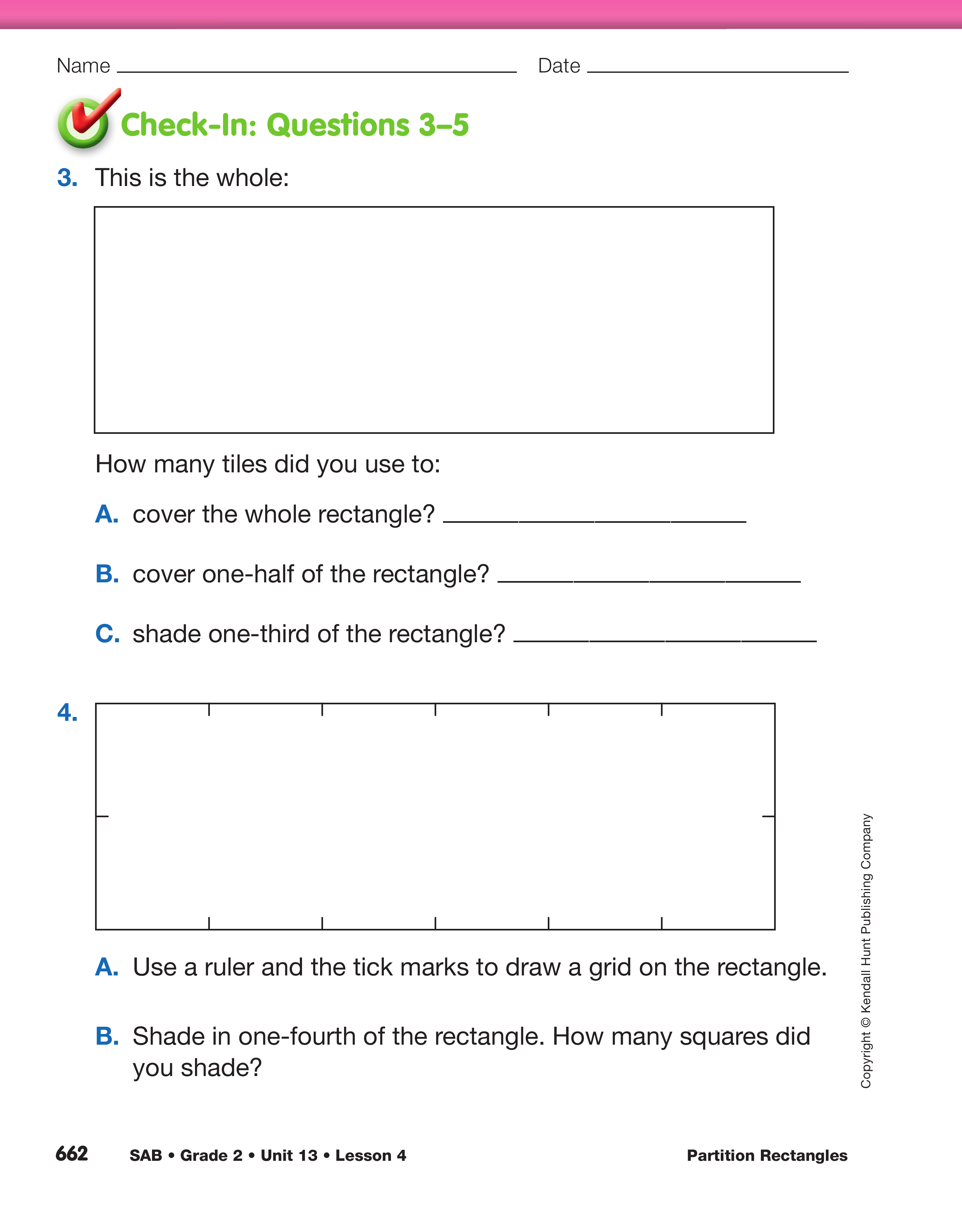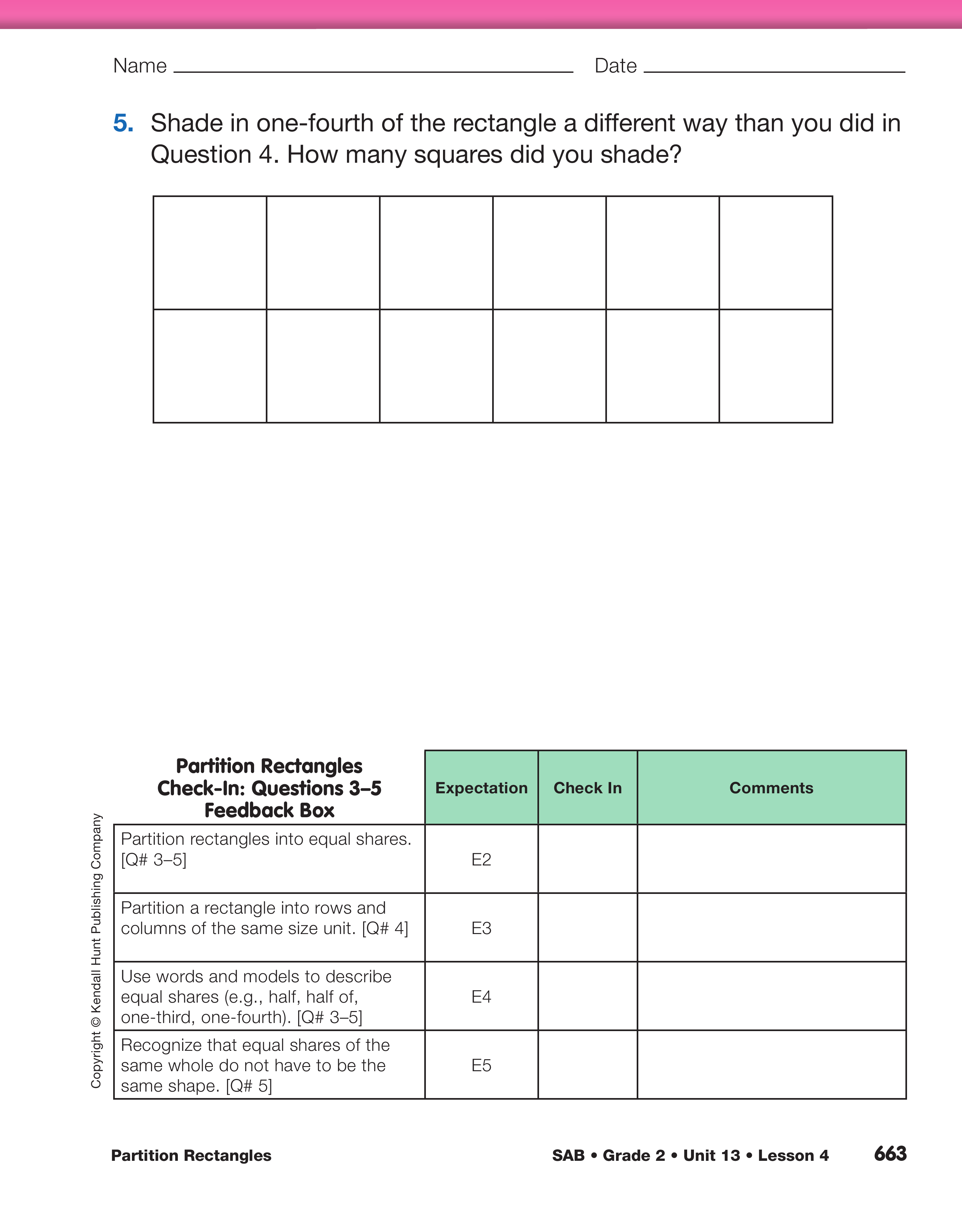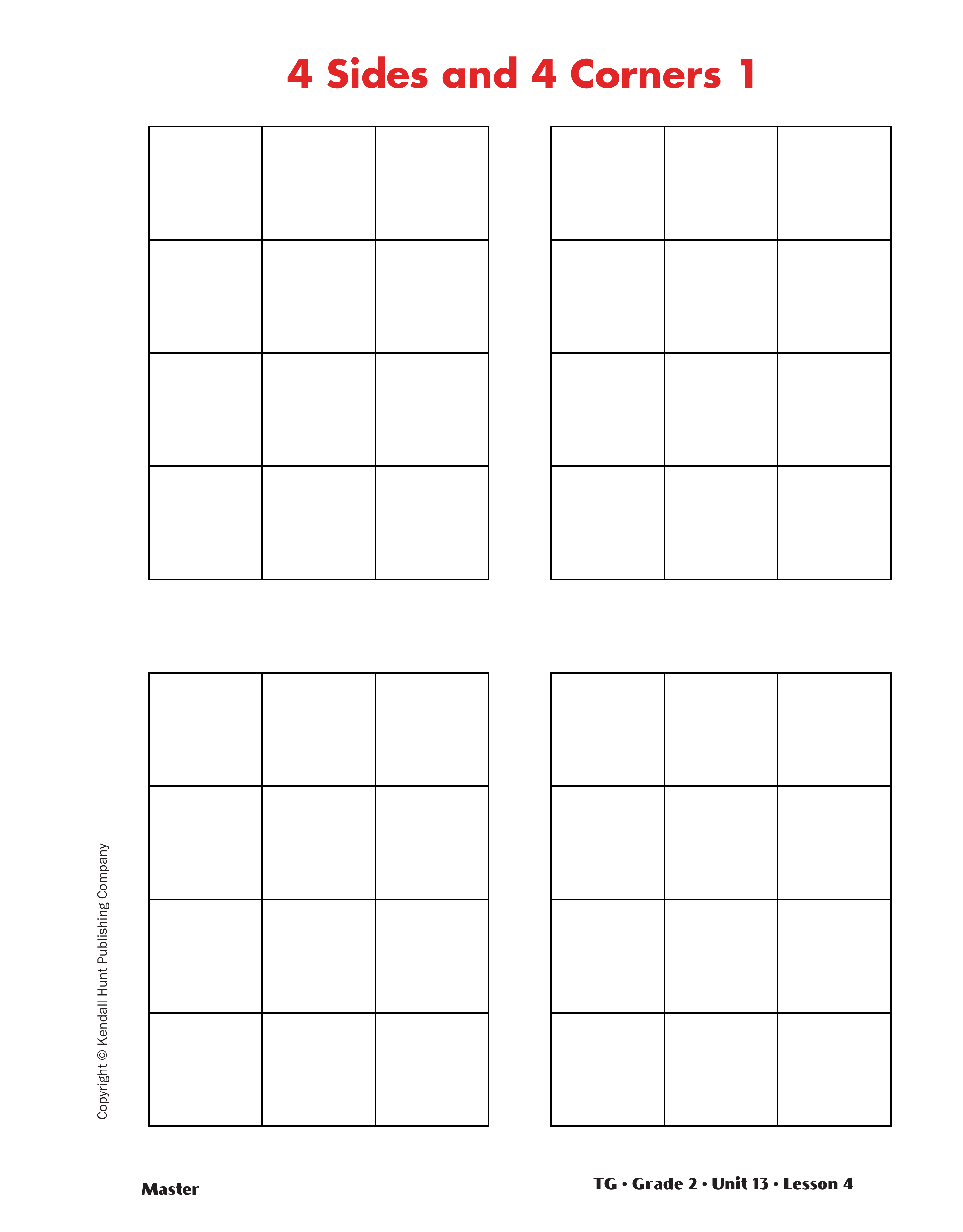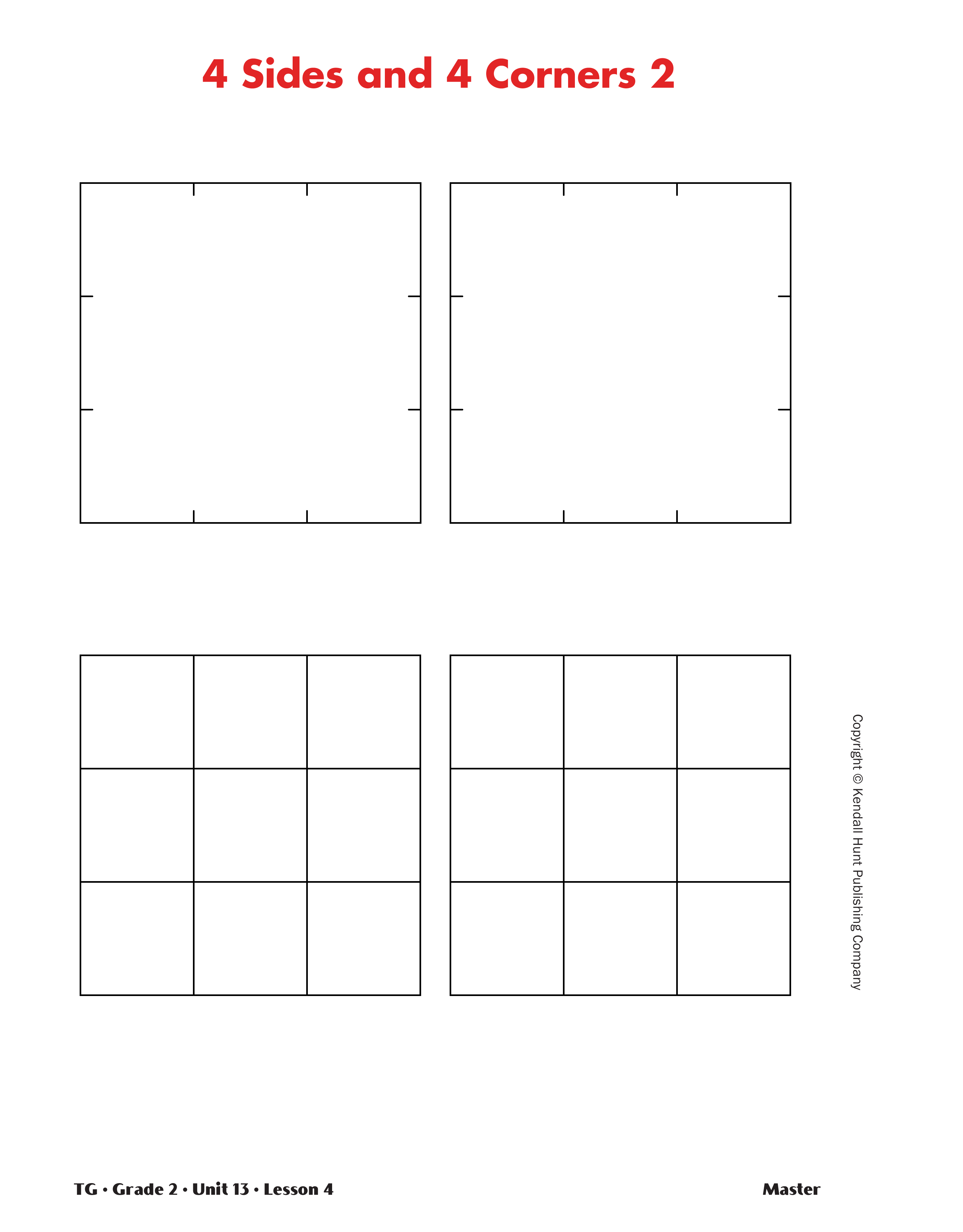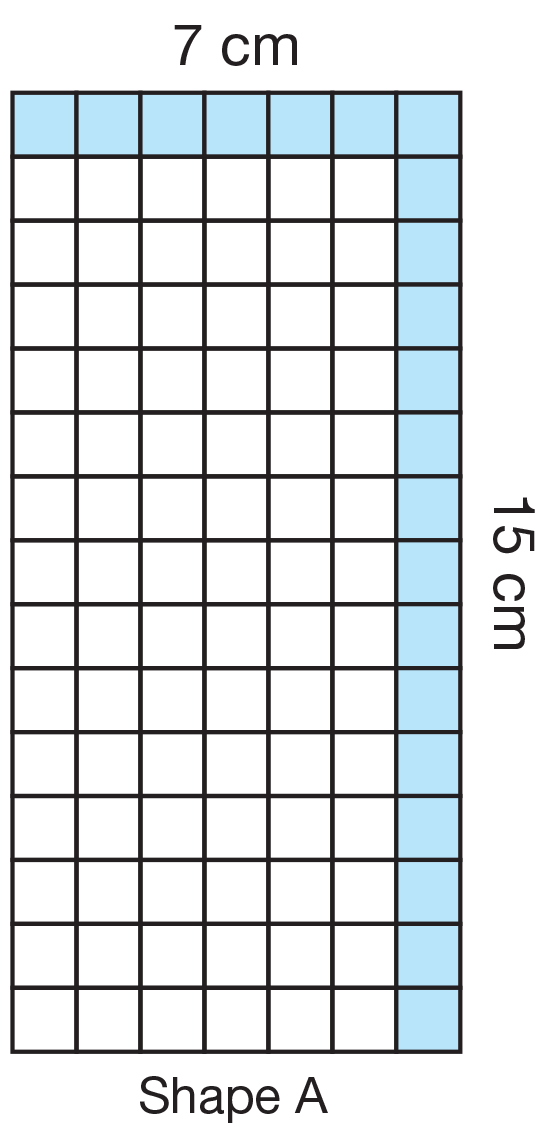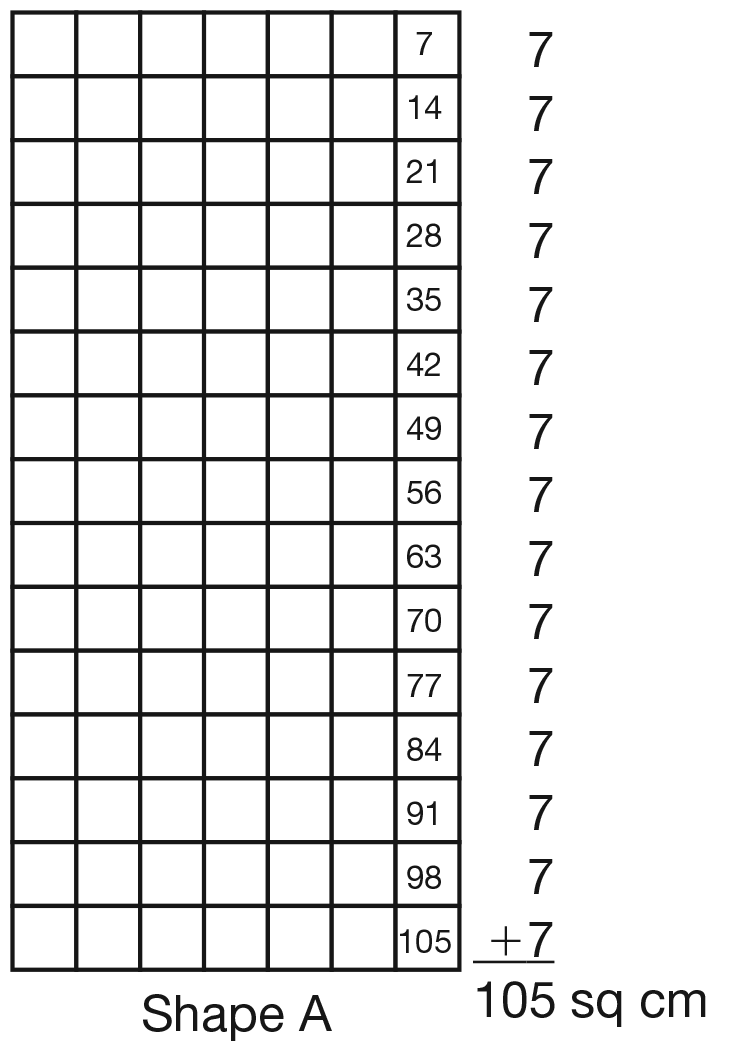Count Square Units. Display and direct students'
attention to the Find Area on a Grid pages in the
Student Activity Book. Students will see Shape A and
Shape B on a centimeter grid.
Tell students that these units are called square centimeters
and are a common unit for measuring area
of relatively small objects and surfaces.
- Who remembers when we have used centimeters
before? (We measured length using centimeters.
We measured volume using cubic centimeters.)
- Why do you think these squares are named square
centimeters? (Each side is one centimeter, but
they are flat, not cubes.)
Have students measure each side of one square with
a centimeter ruler to verify. Ask:
- Why is using the centimeter grid a better way to
measure area than the methods I just showed
you?
Look for responses like the following:
- "We can use square centimeters in both shapes."
- "The square centimeters are easy to count, and
the measurement is easy to report because they
are all the same."
- "All the space is covered. There are no gaps or
empty spaces."
Tell the class they are going to count the square centimeters
in each shape. Remind students that they
report the area using the appropriate unit, square
centimeters.
- How can we find out the area of Shape A? (Count
the squares.)
- How can we count them without losing track? (Write numbers in the squares.)
Suggest that students count and number each square
centimeter. Start the counting by writing the numbers
across the first row of the rectangle on display.
- Can you count these by ones? (Yes, but it would
take a long time.)
- Can anyone think of a way you could make this
counting easier? (Possible responses: skip counting,
multiplying, partitioning the shape into
smaller rectangles)
- How many square centimeters are there in each
row? (7 sq cm;) [See Figure 5.]
- How many are in each column? (15 sq cm;) [See
Figure 5.]
Have a student demonstrate by counting square centimeters
along the length and the width.
Ask students
to measure the sides of the shape with a centimeter
ruler to corroborate the counting.
- Can you skip count to find the area of Shape A?
What would you have to skip count by? (Sevens or
fifteens, but that would be hard.)
- Can you think of any other way you can count
these squares to make it easier?
Give the students a few minutes to discuss with a
partner possible ways to count more efficiently. The
dimensions of this shape do not lend themselves to
easy skip counting for second-graders. However,
some students may suggest ways to make the counting
more efficient. The point is to get students thinking
of ways to count the arrays efficiently. Possible
suggestions are:
- Draw a line at 10 rows and skip count those by
tens; 10 rows of 7 is 70; then count the rest of the
square centimeters by ones and add.
70 + 35 = 105 square centimeters. See Figure 6.
- Each column of 15 sq cm is the same as three 5s;
mark three 5s in each column and skip count by
fives, 3 times for each column. Skip counting by
five twenty-one times comes to 105 square centimeters.
See Figure 7.
If students do not suggest these or other methods of
counting the square centimeters, suggest adding 7
repeatedly to get the total. See Figure 8.
- What if we decide to take it one row at a time. How
many square centimeters are in the first row? (7)
- How many square centimeters in the second row? (7)
- Add that to the first row. How many are there? (14)
Write 14 in the last space of the second row.
- Do I need to write in all the numbers on the second
row? (No, because you know the last one is 14.)
- What do I write in the last space of the third row?
How much is 14 + 7? (21)
- How did you figure that out? (Possible responses:
I added 14 + 10 and then I subtracted 3, or I
knew that 4 + 7 = 11 so 14 + 7 = 21.)
Compare with the answers found using other counting
strategies.
Next, ask students to figure the area of Shape B.
Students should see that they can skip count by 5s to
find this area.
- How many square centimeters are in each row? (5 sq cm)
- How many are in each column? (20 sq cm)
Have a student verify by counting the square
centimeters in a row and a column. Have another
student verify the measurements by measuring the
sides using a centimeter ruler.
Have students skip count to find the area.
- What is an addition sentence that matches? (20 + 20 + 20 + 20 + 20 = 100 sq cm)
- How many 20s are in the sentence? (5)
- What is a multiplication sentence that matches? (5 × 20 = 100 sq cm)
- Can you show what the 20 means in the multiplication
sentence? (It means that there are 20 square
centimeters in a column.)
- What does the 5 mean in the multiplication
sentence? (It means that there are 5 columns,
five 20s.)
Label each shape with its area, including the unit.
Shape A is 105 square centimeters and Shape B is
100 square centimeters.
- Which shape is longer? (Shape B)
- Which shape is wider? (Shape A)
- Which shape has the largest area? (Shape A)
Find Area Two Ways. Direct students to the Find
Area Two Ways section of the Find Area on a Grid
pages in the Student Activity Book.
- Talk with a partner about finding the areas of these
shapes. For which of these shapes could you use a
skip counting strategy? (Possible responses:
Shape 1, Shape 4)
- Which of these shapes could you divide into smaller
rectangles? (Shape 2, Shape 3, Shape 4)
Assign Questions 1–4 to student pairs. Ask students to
find two ways to find the area of each shape so that
they can check the reasonableness of their answers.
Encourage students to use strategies such as counting,
skip counting, repeated addition, reasoning, decomposing
the shape into rectangles, or multiplication if
they are ready to do so. For example, for Question 1,
students may first skip count the columns by threes (3,
6, 9, 12) and then multiply 3 × 4 to verify an area of
12 square centimeters. Remind students to label each
shape with its area including the unit. Tell them they
can use sq cm as an abbreviation of square centimeter.
Circulate as students work and select a few to explain
their solution strategies. Try to select a variety of
strategies.
Upon completion, display the second Find Area on a
Grid page and have selected students explain the
strategies they used to find the areas of each of the
shapes. Write the areas on the display including the
units, square centimeters. See the Sample Dialog for
sample questions.
Observe students' strategies for finding area. Some students
may continue to write all the numbers in the square
centimeters. This can be laborious. When appropriate,
encourage them to use skip counting and partitioning to find
the area of shapes.

Use this Sample Dialog to discuss ways to find the area of
Shape 2 on the Find Area on a Grid pages in the Student Activity
Book.
Teacher: Nila, what area did you find for shape number 2?
Nila: I got 16.
Teacher: What unit of measurement did you use, Nila? Sixteen
what?
Nila: 16 square centimeters.
Teacher: How did you count, Nila?
Nila: I just counted. I wrote the number in each square and I got
up to sixteen.
Teacher: Roberto, what area did you get? Did you count the
same way Nila did?
Roberto: I got 16 square centimeters, too, but I didn't count the
same way.
Teacher: How did you count them, Roberto?
Roberto: For the two rows on the bottom, I counted by twos and
I got 12. Then I went 13, 14, 15, 16 for the top row.
Teacher: Good. What number sentence could you write for how
you counted this shape?
Roberto: 12 + 4 = 16 square centimeters. 12 is the bottom
2 rows and 4 is the top row.
Teacher: Very good. Did anyone get a different number sentence
or count in a different way?
Michael: It was sort of like Roberto's way, but I made the shape
into two smaller rectangles and multiplied. I had a 1 × 4
rectangle and a 2 × 6 rectangle. 4 + 12 = 16 square centimeters.
After some discussion, assign Check-In: Question 5
for students to complete individually.
Use Check-In: Question 5 and the Feedback Box on the Find
Area on a Grid pages in the Student Activity Book to assess
students' abilities to find the area of a shape using counting,
repeated addition, and reasoning strategies [E8]; compose
and decompose shapes into smaller shapes [E6]; show work
[MPE5]; and use numbers, words, and square units to report
area measurements [MPE6].
Assign the Find Area at Home Homework Masters
after Part 2 to provide more practice finding the area
of a shape.
















